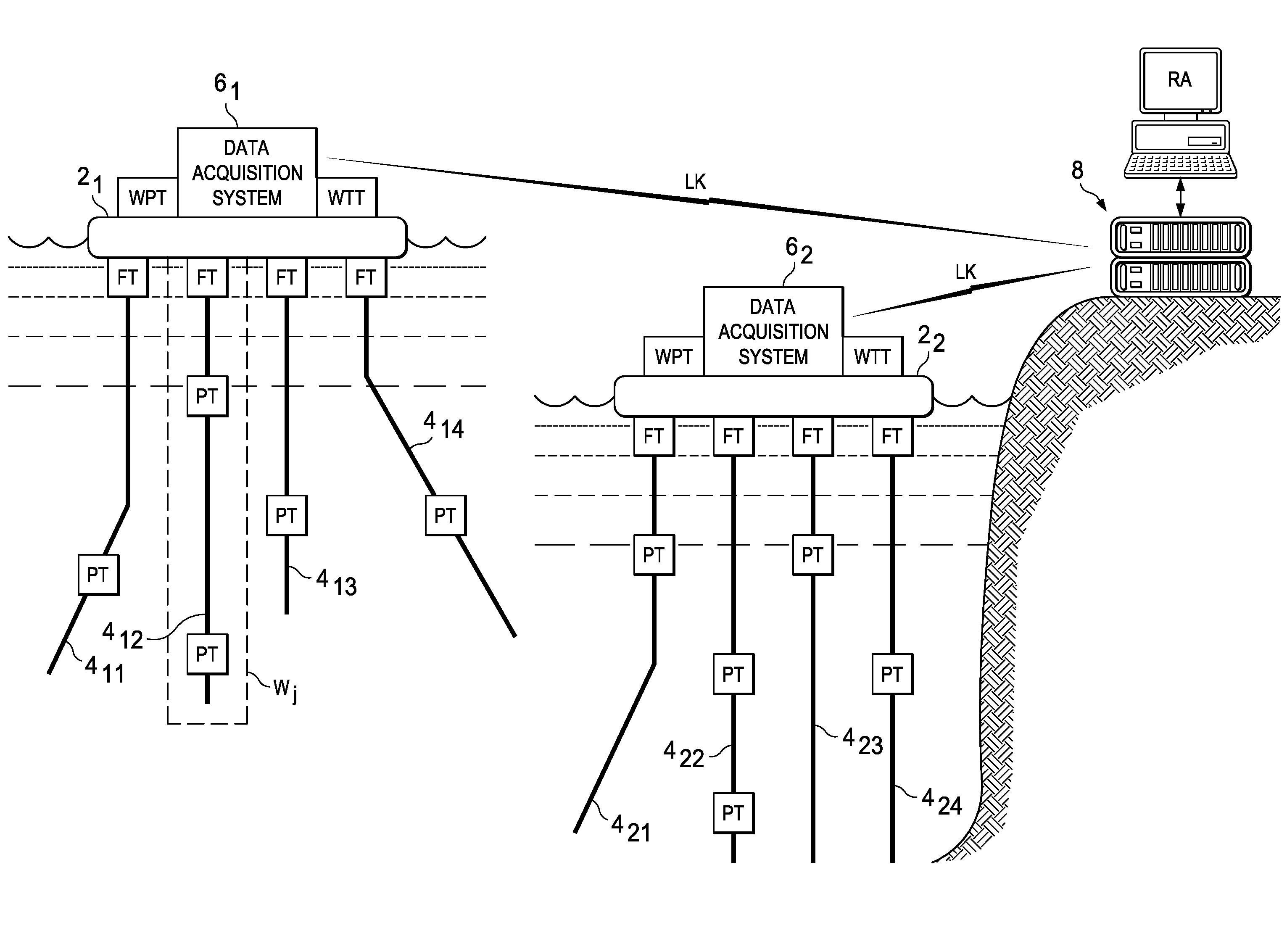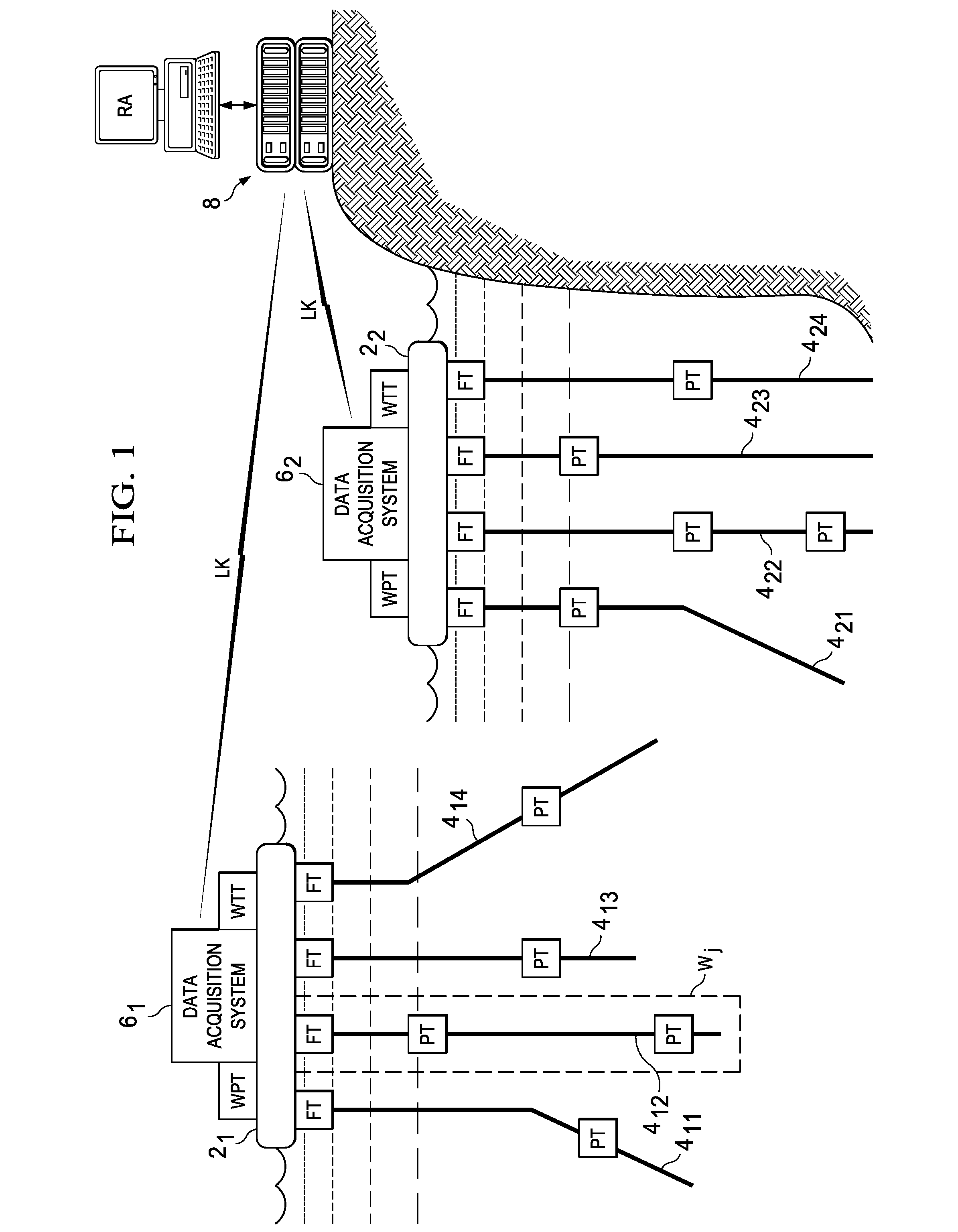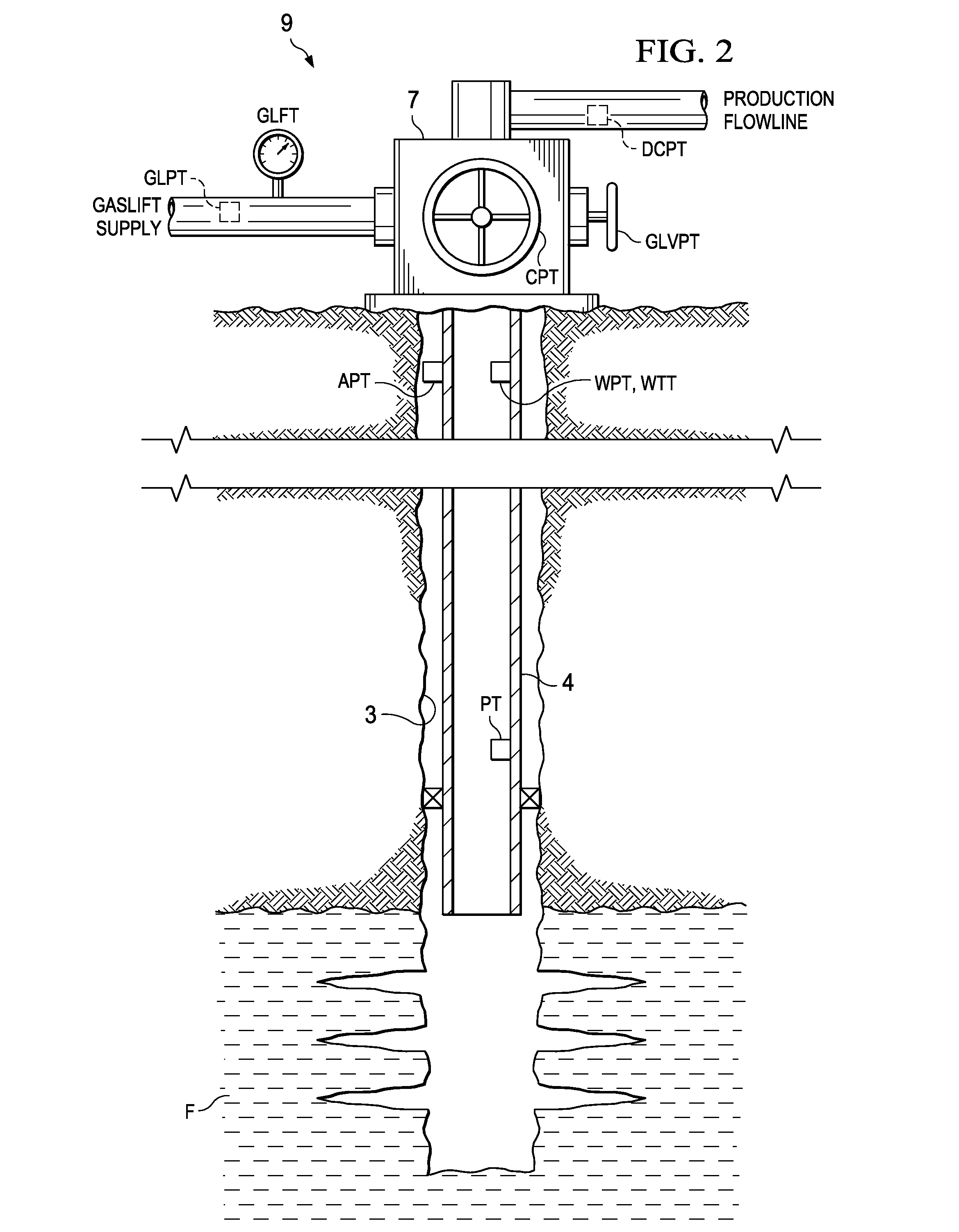Determining Fluid Rate and Phase Information for a Hydrocarbon Well Using Predictive Models
- Summary
- Abstract
- Description
- Claims
- Application Information
AI Technical Summary
Benefits of technology
Problems solved by technology
Method used
Image
Examples
Embodiment Construction
[0041]The present invention will be described in connection with its preferred embodiment, namely as implemented into an existing production field from which oil and gas are being extracted from one or more reservoirs in the earth, because it is contemplated that this invention will be especially beneficial when used in such an environment. However, it is contemplated that this invention may also provide important benefits when applied to other tasks and applications. Accordingly, it is to be understood that the following description is provided by way of example only, and is not intended to limit the true scope of this invention as claimed.
[0042]As will be evident to those skilled in the art having reference to this specification, the preferred embodiments of this invention employ physical models, temperature sensors and pressure sensors, and where applicable, valves and choke positions, to determine the rate and phase of fluid produced from a well. This invention can also provide ...
PUM
 Login to View More
Login to View More Abstract
Description
Claims
Application Information
 Login to View More
Login to View More - R&D
- Intellectual Property
- Life Sciences
- Materials
- Tech Scout
- Unparalleled Data Quality
- Higher Quality Content
- 60% Fewer Hallucinations
Browse by: Latest US Patents, China's latest patents, Technical Efficacy Thesaurus, Application Domain, Technology Topic, Popular Technical Reports.
© 2025 PatSnap. All rights reserved.Legal|Privacy policy|Modern Slavery Act Transparency Statement|Sitemap|About US| Contact US: help@patsnap.com



